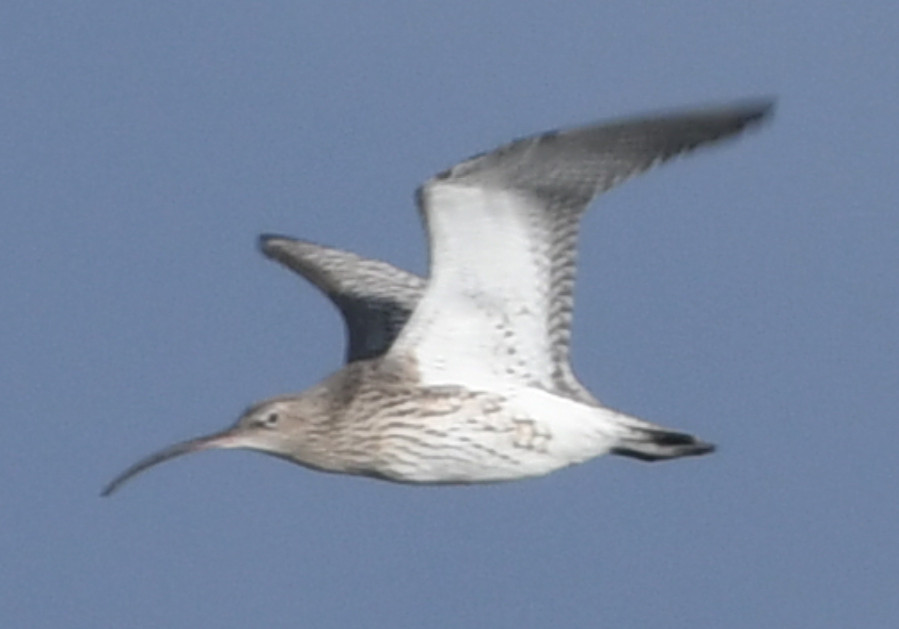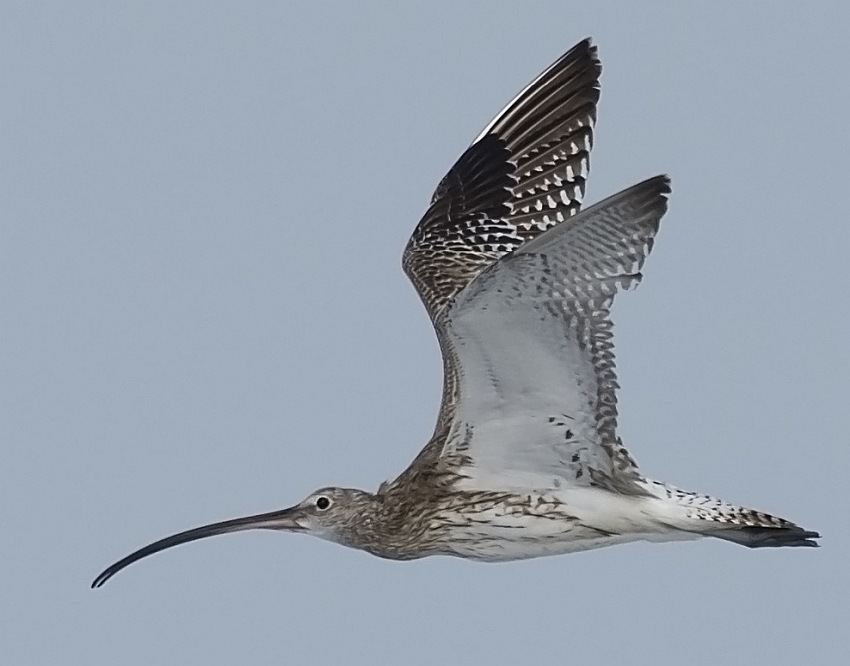Steppe or Southern Whimbrel in India
I received this interesting message about a Steppe Whimbrel N.p.alboaxillaris photographed by Jaysukh Parekh Suman on 21st April 2019 at Mandvi-Kandla sea-coast, Kutch, Gujarat, India. It’s identification was questioned on the basis of it’s underwing pattern i.e. the misunderstanding that axillaries of this subspecies must be entirely white to qualify for acceptance.
The photographer writes: here are some of my fresh search details pl.check1 link to International wader study group observation.https://sora.unm.edu/sites/default/files/journals/iwsgb/v092/p00030-p00037.pdf
| Bulb•tin 92 August 2000 – sora.unm.eduinternational wader study group bulletin sites.sora.unm.edu |
pl.check page number 31 (pasting here),I think this is related to my friend Norman’s mail.
“RESULTS Plumage colouring The Southern Whimbrel is characterised by pure-white axillaries, a white lower back, and white short upper tail coverts. Some specimens, despite the presence on the back or axillaries of occasional dark flecks or blotches, are assigned by experts to subspecies alboaxillaris (Gladkov 1951, Kozlova 1962).
Twenty-two of the Whimbrel specimens at ZIN are assigned to alboaxillaris. Our thorough examination of these birds showed that only in three of them are all the axillaries pure white. In the rest, either some or all of these feathers had scattered brownish flecks, while in two the flecks on the axillaries were rather numerous. In the collection at ZM MGU four specimens can unam- biguously be assigned to alboaxillaris. Only three of these are adult, two having pure white axillaries. Of nine specimens in the ZIN collection regarded as transitional to the phaeopus race, three have flecks on the axillaries and upper back, five have flecks only on the axillaries, and one in the Menzbir Collection has only isolated flecks on the axillaries. The last should, in my opinion, be assigned to alboaxillaris.
Plumage colouration on the lower back and short tail coverts is more consistent: in all birds examined and assigned to alboaxillaris, these parts are pure white. Thus the colouration of the back and short tail coverts is a more reliable identification character for separating the Southern Whimbrel.
It must be realised that under field conditions the
characters described above are difficult to use for
identification if the birds are at some distance. It is usually not possible to make a judgement about the presence of flecks on the lower back, since it can be seen only when the bird is taking to the air or when it is flying away from the observer. The same applies to obtaining a clear view of the axillaries. In flight Numenius species
Bulletin 92 Aucust 2000
31 “————-here I am attaching my pictures
please compare tail of my picture with this , some part of common whimbrel has copied and moved to compare which note please.see my picture under tail looks exactly as Steppe Whimbrel.bar pattern is totally similar with Steppe Whimbrel.bars in undertail in Common Whimrel has broad brown bars while in Steppe Whimbrel there are broad white bars in undertail.pl.check part sawing arrow there are mild bars in underwing or near axillaries like my bird.(my bird is clicked in direct sunlight.may be they are brighter due to that.
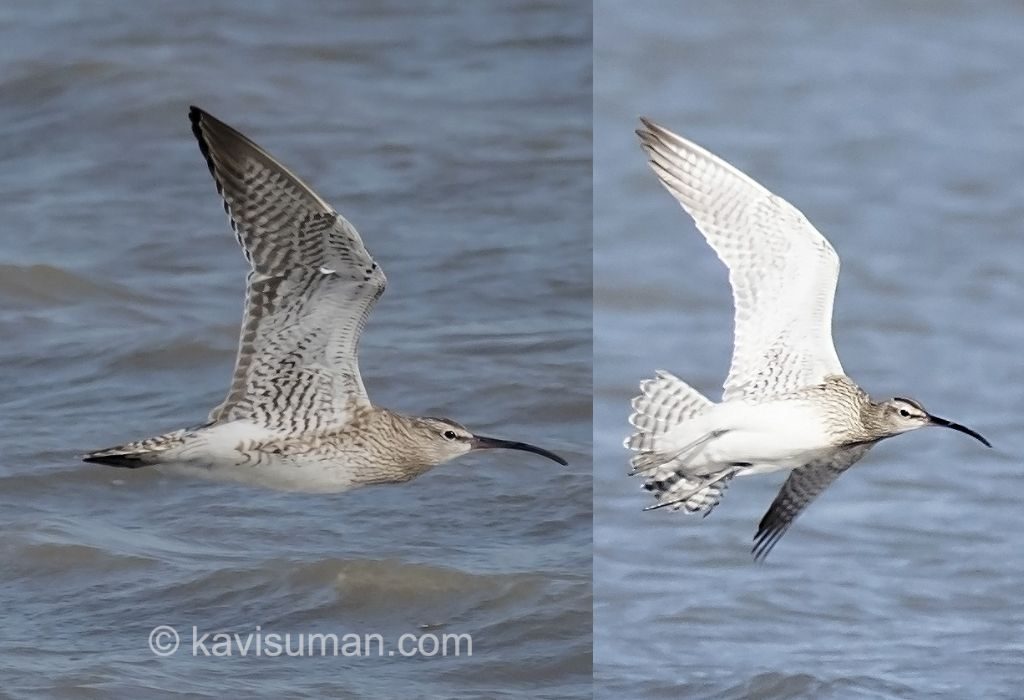
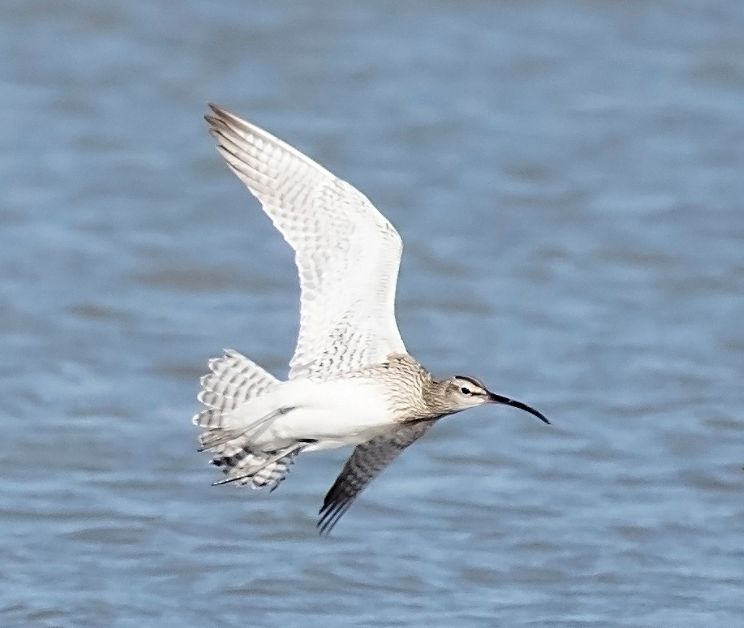
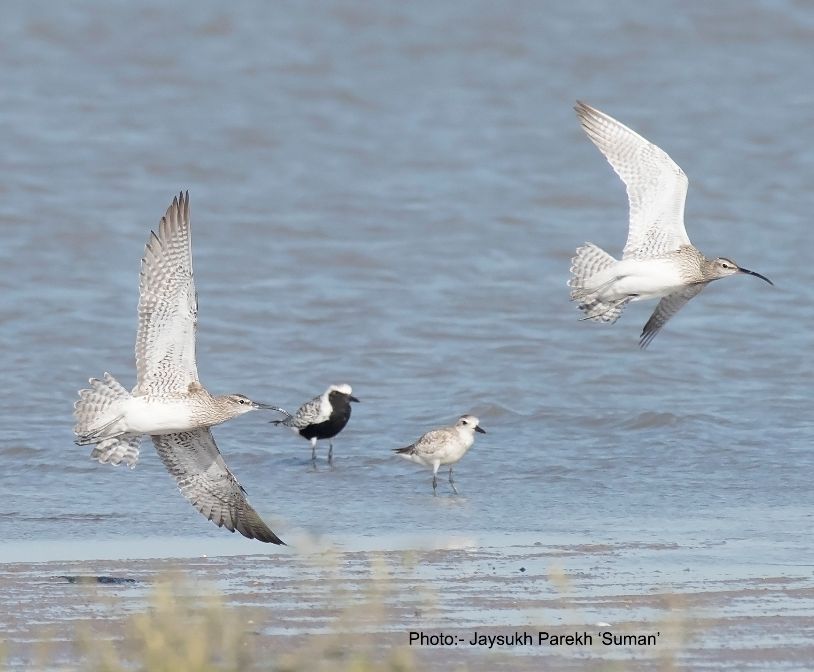
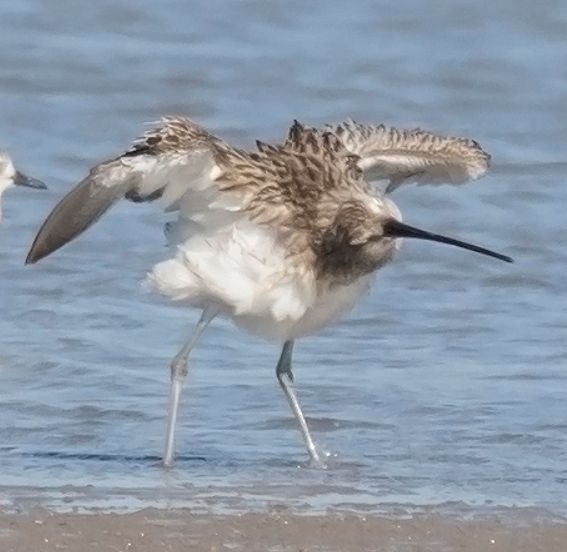
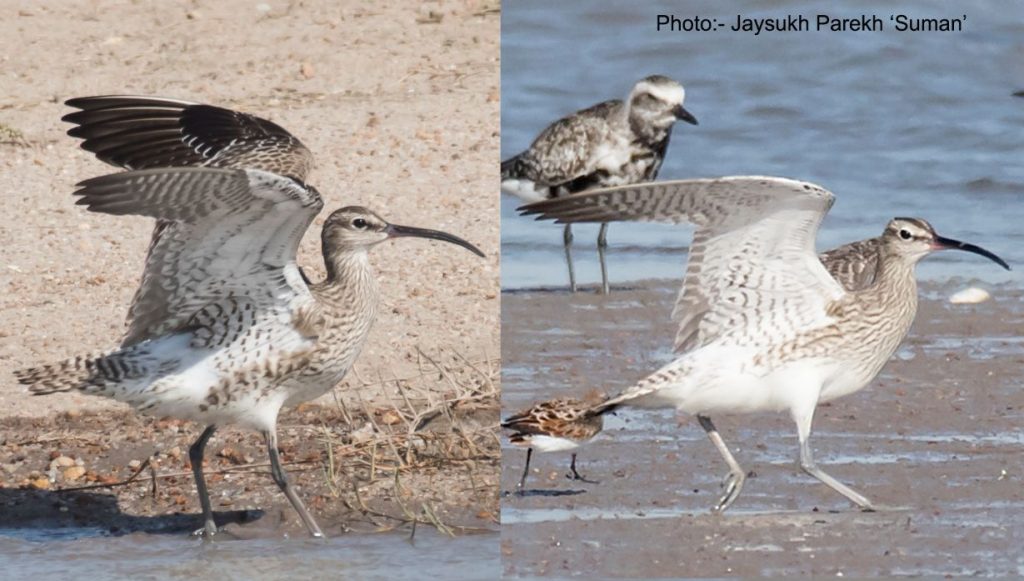
When Jaysukh Parekh Suman presented his extraordinary find and pictures of the Steppe Whimbrel he had found on 21st April 2019 in India to Oriental Bird Pix the moderator sought help by Gary Allport who had just published his records and photographs of two Steppe Whimbrels in Mozambigue, see links
:
Mr.Allport dismissed Jaysukh Parekh Suman ‘s record on the basis that the axillaries of his whimbrel were not white. Of the many photo’s presented by Mr.Allport only one gives a clear view on the axillaries of one of the Mozambigue Steppe Wimbrels i.e, the cover photo of the WSG Bulletin in which his article was published. Clearly one can see that the axillaries of the Maputo bird were not white but patterned quite in agreement with the description by Morozov (1998) and Engelmoer & Roselaar (1998)!
https://radioactiverobins.com/archive/snipes-waders/whimbrel%20numenius%20phaeopus.htm
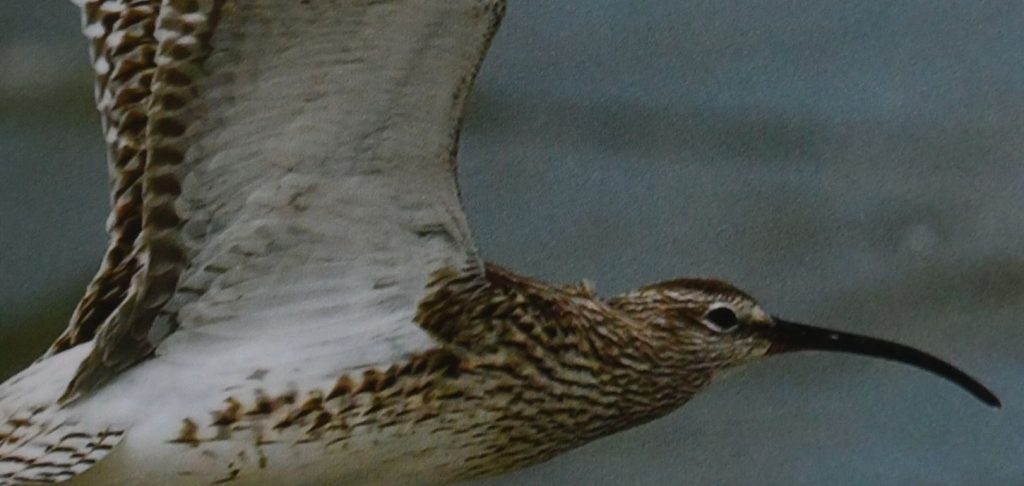
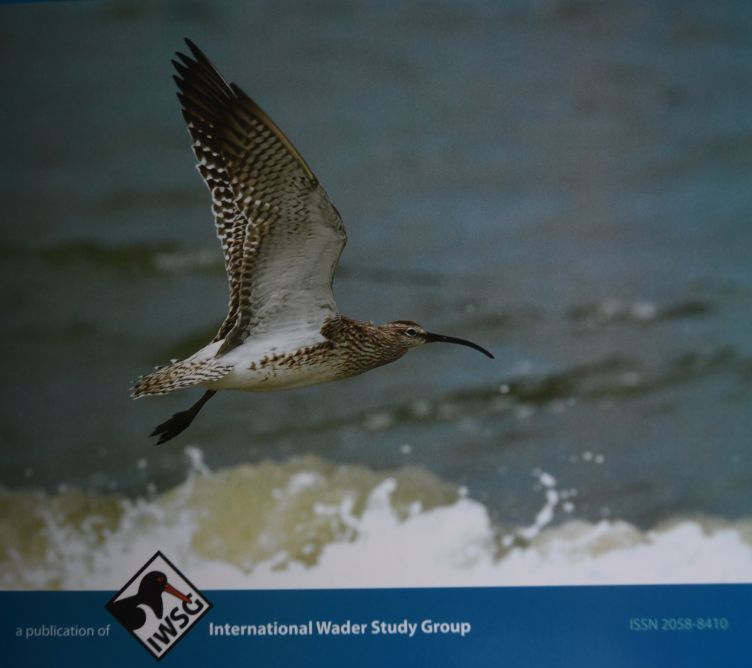
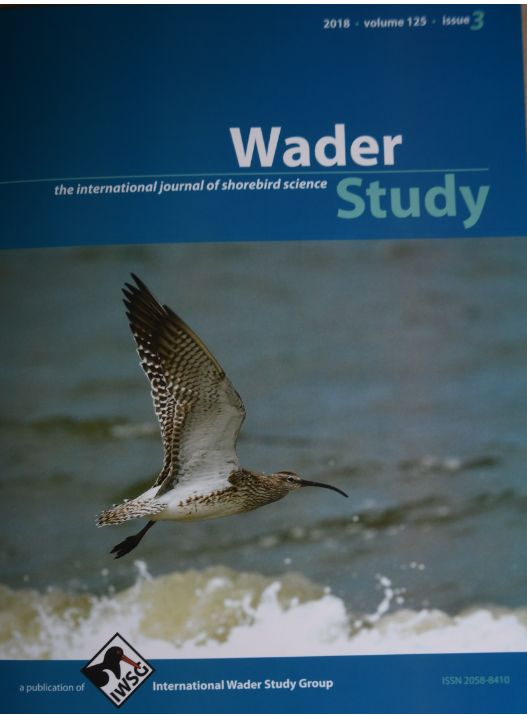
https://sora.unm.edu/sites/default/files/journals/iwsgb/v092/p00030-p00037.pdf
Current status of the southern subspecies of the Whimbrel Numenius phaeopus alboaxillaris (Lowe 1921) in Russia and Kazakstan V. V. Morogov Morozov, V.V. Current status of the southern subspecies of the Whimbrel Numenius phaeopus alboaxillaris Lowe 1921 in Russia and Kazakstan. Wader Study Group Bull. 92: 30-37.
Interestingly, other curlew species from Russia and Kazakhstan share the
underwing pattern of Steppe Whimbrel i.e. white underwing coverts and
axillaries which are at most sparingly patterned: Steppe Curlew
Numenius (arquata) suschkini; Russian Curlew Numenius arquata subspec.
wintering in W.Europe; Eurasian Curlew Numenius arquata subspec.
orientalis wintering from India to South Africa; Slender-billed Curlew
Numenius tenuirostris, see photographs and links below:
https://radioactiverobins.com/archive/snipes-waders/steppe%20curlews%20num%20arq%20sschkini.htm
https://radioactiverobins.com/archive/snipes-waders/Slender-billed%20Curlew-INTRO.htm
